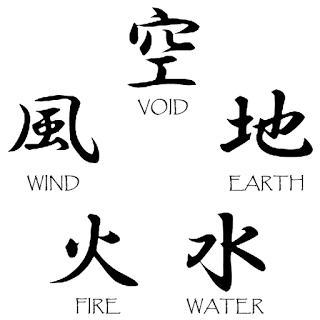The Book of Five Rings is a treatise on swordsmanship and martial arts written by Miyamoto Musashi. IMHO the top five concepts introduced in the book include: No Mind, The Void, Three Modes of Attack, The Way of the Sword, The Five Rings
Top 5 Concepts from “The Book of Five Rings”
Miyamoto Musashi was a Japanese swordsman, philosopher, and writer who lived from 1584 to 1645. He was renowned for his skills in the art of sword-fighting and wrote the famous book “The Book of Five Rings”, which is still studied by martial artists today. Musashi was also known for his distinctive fighting style, which involved using two swords simultaneously. He was considered one of the greatest swordsmen in Japanese history.
The Book of Five Rings is a treatise on swordsmanship and martial arts written by Miyamoto Musashi. IMHO the top five concepts introduced in the book include:
- No Mind
- The Void
- Three Modes of Attack
- The Way of the Sword
- The Five Rings

No-Mind
The concept of “no-mind”, or mushin, which is the state of being completely focused and free from distractions or emotions.
No-mind or mushin is the idea that a martial artist should be able to remain focused and free from distractions or emotions during combat. Musashi believed that this state of mind was essential for success in battle, as it allowed the martial artist to respond quickly and decisively to any situation. He wrote that “the primary thing when you take a sword in your hands is your intention to cut the enemy, whatever the means. Whenever you parry, hit, spring, strike or touch the enemy’s cutting sword, you must cut the enemy in the same movement. It is essential to attain this.”
The Void
The concept of “the void”, or mushin, which is the state of being empty and free from preconceived notions or expectations.
The concept of “the void” or mushin is the idea that a martial artist should be empty and free from preconceived notions or expectations during combat. Musashi believed that this state of mind was essential for adaptability and flexibility in battle, as it allowed the martial artist to respond to any situation without being limited by preconceived notions or expectations. He wrote that “the void is not emptiness. It is rather a place of potential, a space that can be filled with any number of possibilities. When you are in the void, you are able to see all options clearly and choose the best course of action without being influenced by your own desires or expectations.”
“The Void is not emptiness. It is rather a place of potential, a space that can be filled with any number of possibilities.”
Three Modes of Attack
Musashi discusses three different modes of attack in The Book of Five Rings: the “direct” mode, the “indirect” mode, and the “combined” mode. The direct mode “Ken no sen” involves attacking an opponent directly and with full force, using powerful strikes and techniques. The indirect mode “Tai no sen” involves using feints and other tactics to trick the opponent and create openings for attack. The combined mode “Tai tai no sen” involves using a combination of direct and indirect attacks in order to keep the opponent off balance and gain the upper hand.
The Way of the Sword
The concept of “the way of the sword” is the idea that the pursuit of martial arts should be a lifelong journey of learning and self-improvement. Musashi believed that this was the key to success in combat, as it allowed the martial artist to continually improve and adapt to changing circumstances. He wrote that “the way of the sword is not just about mastering a particular technique or style. It is about constantly seeking to improve and grow as a martial artist. It is about never being satisfied with your current level of skill, and always striving to become better. The way of the sword is a lifelong journey, and those who follow it will find that they are always learning and growing.”
The Five Rings
The concept of “the five rings”, which are the five elements of strategy that Musashi believed were essential to success in martial arts: the earth, water, fire, wind, and void.

The concept of “the five rings” is the idea that there are five elements of strategy that are essential to success in martial arts: the earth, water, fire, wind, and void. Musashi believed that these elements represented different aspects of combat, and that a martial artist should strive to understand and master them all in order to become a truly skilled fighter.
He wrote that “the five rings are the earth, water, fire, wind, and void. Each of these represents a different aspect of combat, and a true master of the sword must understand and master them all. The earth is the foundation upon which all other elements are built. It represents the physical aspects of combat, such as strength, endurance, and technique. The water is the source of life and represents the mental aspects of combat, such as strategy, tactics, and awareness. The fire is the source of power and represents the spiritual aspects of combat, such as courage, determination, and resolve. The wind is the messenger and represents the social aspects of combat, such as leadership, teamwork, and communication.
If you want more here’s a very compelling video by Tu Lam (Ronin Tactics) about a lot of this:
Please support our sponsors:
 Use “warriormindset” when you check out. |
 |

0 Comments